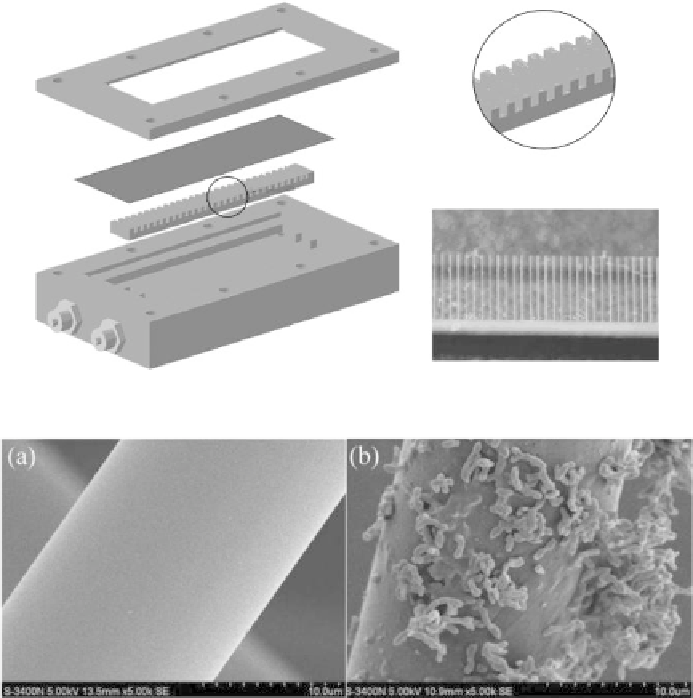Environmental Engineering Reference
In-Depth Information
Figure 11.4.8
The transparent microchannel photobioreactor (Qu et al., 2011).
Figure 11.4.9
Scanning electron microscope images of the surface of activated carbon fiber: (a) before
immobilization, and; (b) after immobilization (Ren et al., 2012).
can resolve this problem to some extent. Ren et al. (2012) developed an anaerobic
fluidized-bed type photobioreactor with activated carbon fiber as support material.
The activated carbon fibers have a high specific surface area, excellent biocompatibil-
ity and good adsorption capacity. When they fluidize in the reactor, cells can adhere
onto the surface to form a biofilm (Figure 11.4.9). Such design could dramatically
improve the light energy utilization and photobiohydrogen production performance.
Xie et al. (2012) also developed surface modified activated carbon fibers as a solid
carrier to improve the photobiohydrogen production. The oxidation of activated car-
bon fibers by HNO
3
increased the concentration of oxygen functional groups on the
external surfaces and surface roughness. Consequently, the amount of immobilized
cells was improved due to the increased surface roughness and abundant surface func-
tional groups. Researchers in this group also used a novel bio-carrier to immobilize
photo-fermentative bacteria for photobiohydrogen production (Xie et al., 2011). The
light shading effect could be prevented and better fluidization of solid carriers could

Search WWH ::

Custom Search